


| MOQ: | 1kg |
| Price: | US $45/kg |
| Standard Packaging: | Cylinder/Tank |
| Delivery Period: | 15 days |
| Payment Method: | L/C, T/T |
| Supply Capacity: | 50000kg/month |
Silane is a chemical compound that consists of one silicon atom bonded to four hydrogen atoms (SiH4). Here are some key points about silane:
Structure: Silane has a tetrahedral molecular structure, with the silicon atom at the center and the four hydrogen atoms surrounding it.
Properties: Silane is a colorless, flammable gas with a pungent odor. It is less dense than air and can form explosive mixtures when exposed to certain conditions. Silane is highly reactive and can undergo various chemical reactions.
Production: Silane can be produced through several methods, including the reaction of silicon with hydrogen or the decomposition of silicon-containing compounds. Industrial-scale production typically involves the reaction of metallurgical-grade silicon with hydrogen chloride.
Applications: Silane has various applications in different industries:
Semiconductor Industry: Silane is used as a precursor in the deposition of silicon-based thin films for semiconductor devices. It is an essential gas in processes such as chemical vapor deposition (CVD) and plasma-enhanced CVD (PECVD).
Solar Energy: Silane is utilized in the production of silicon-based photovoltaic cells (solar cells). It serves as a precursor for depositing thin films of amorphous or polycrystalline silicon on solar cell substrates.
Surface Modification: Silane compounds are used as coupling agents and surface modifiers in the formulation of coatings, adhesives, and sealants. They can improve the adhesion and compatibility between different materials.
Chemical Synthesis: Silane can be used as a reducing agent or a precursor for the synthesis of various silicon-containing compounds in the chemical industry.
It's important to note that silane is a hazardous substance due to its flammability and reactivity. Proper handling, storage, and safety measures should be followed when working with silane to ensure the well-being of individuals and prevent accidents.
Basic Info.
| Model NO. | Sih4 | Boiling Point | -112 ºC |
| Density | 1.34 Kg/M³ | Melting Point | -185 ºC |
| Cylinder Pressure | 12.5MPa/15MPa/20MPa | Transport Package | 47L/440L/ISO Tank |
| Specification | 47L/440L/ISO Tank | Origin | China |
| HS Code | 2931900090 | Production Capacity | 20, 000tons/Year |
Specification:
CAS No.: 7803-62-5
EINECS No.: 232-263-4
UN No.: UN2203
Purity: 99.9999%
Dot Class: 2.1
Appearance: Colorless
Grade Standard: Electronic Grade
| Specification | 99.9999% |
| Carbon Monoxide | ≤ 0.05 ppm |
| Carbon Dioxide | ≤ 0.05 ppm |
| Total chloride | ≤ 0.1 ppm |
| Methane | ≤ 0.05 ppm |
| C2-C4 | ≤ 0.1 ppm |
| Nitrogen | ≤ 0.5 ppm |
| Oxygen | ≤ 0.05 ppm |
| Moisture | ≤ 0.1 ppm |
| Silyl Ether | ≤ 0.1 ppm |
| Methyl Silane | ≤ 0.1 ppm |
| Disilane | ≤ 0.3 ppm |
| Hydrogen | ≤ 20 ppm |
| Aluminum | ≤ 0.02 ppba |
| Antimony | ≤ 0.02 ppba |
| Arsenic | ≤ 0.02 ppba |
| Gallium | ≤ 0.02 ppba |
| Boron | ≤ 0.02 ppba |
| Phosphorus | ≤ 0.02 ppba |
| Iron + Chromium + Nickel + Copper + Zinc | ≤ 1 ppba |
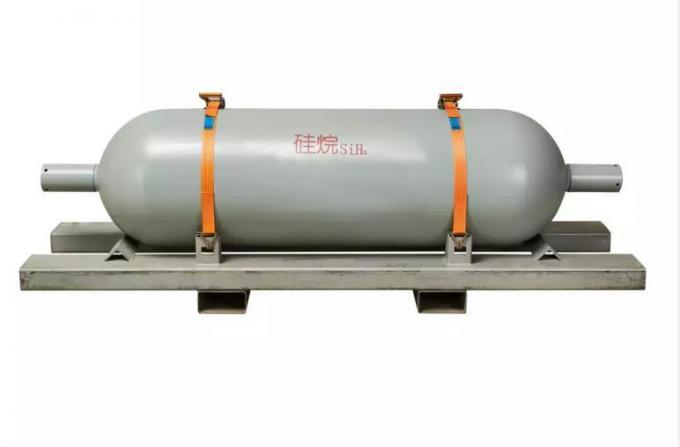

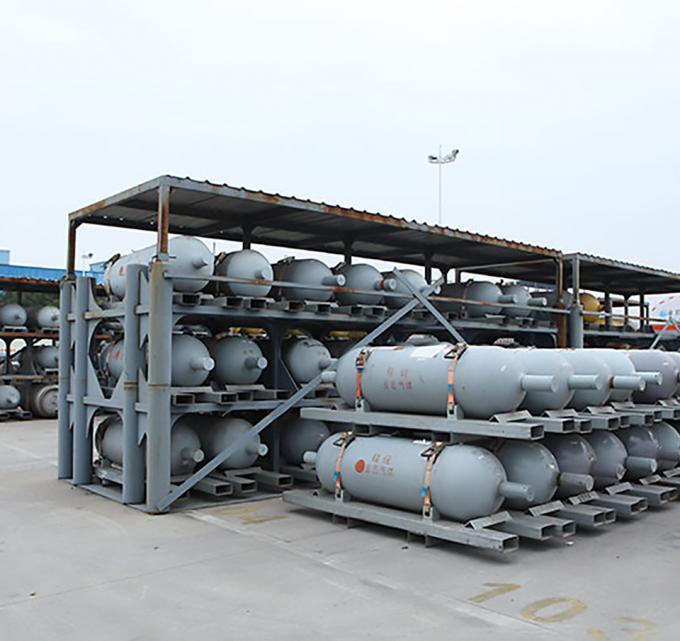

| Cylinder Specifications | Contents | |
| Cylinder Capacity | Valve | Weight |
| 47L | DISS632 | 10 kgs |
| 440L | DISS632 | 120 kg |
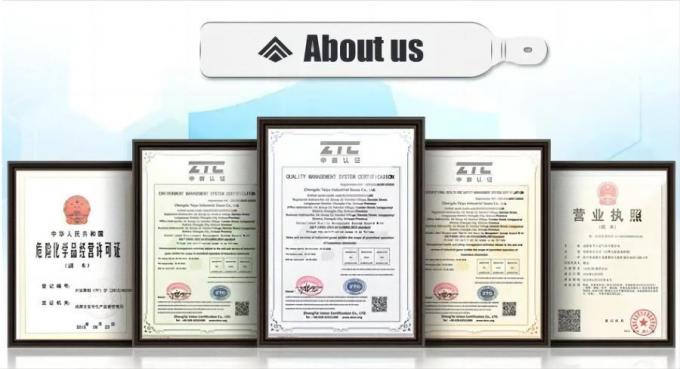
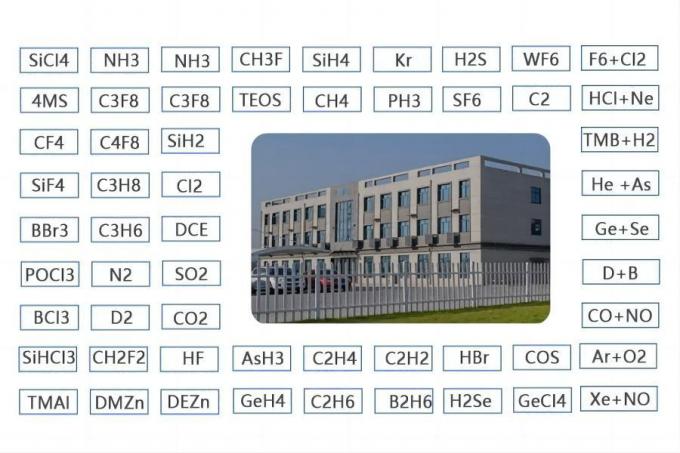
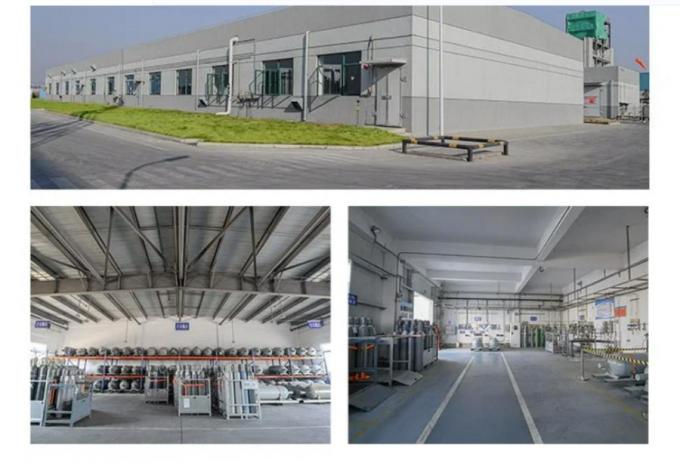

| MOQ: | 1kg |
| Price: | US $45/kg |
| Standard Packaging: | Cylinder/Tank |
| Delivery Period: | 15 days |
| Payment Method: | L/C, T/T |
| Supply Capacity: | 50000kg/month |
Silane is a chemical compound that consists of one silicon atom bonded to four hydrogen atoms (SiH4). Here are some key points about silane:
Structure: Silane has a tetrahedral molecular structure, with the silicon atom at the center and the four hydrogen atoms surrounding it.
Properties: Silane is a colorless, flammable gas with a pungent odor. It is less dense than air and can form explosive mixtures when exposed to certain conditions. Silane is highly reactive and can undergo various chemical reactions.
Production: Silane can be produced through several methods, including the reaction of silicon with hydrogen or the decomposition of silicon-containing compounds. Industrial-scale production typically involves the reaction of metallurgical-grade silicon with hydrogen chloride.
Applications: Silane has various applications in different industries:
Semiconductor Industry: Silane is used as a precursor in the deposition of silicon-based thin films for semiconductor devices. It is an essential gas in processes such as chemical vapor deposition (CVD) and plasma-enhanced CVD (PECVD).
Solar Energy: Silane is utilized in the production of silicon-based photovoltaic cells (solar cells). It serves as a precursor for depositing thin films of amorphous or polycrystalline silicon on solar cell substrates.
Surface Modification: Silane compounds are used as coupling agents and surface modifiers in the formulation of coatings, adhesives, and sealants. They can improve the adhesion and compatibility between different materials.
Chemical Synthesis: Silane can be used as a reducing agent or a precursor for the synthesis of various silicon-containing compounds in the chemical industry.
It's important to note that silane is a hazardous substance due to its flammability and reactivity. Proper handling, storage, and safety measures should be followed when working with silane to ensure the well-being of individuals and prevent accidents.
Basic Info.
| Model NO. | Sih4 | Boiling Point | -112 ºC |
| Density | 1.34 Kg/M³ | Melting Point | -185 ºC |
| Cylinder Pressure | 12.5MPa/15MPa/20MPa | Transport Package | 47L/440L/ISO Tank |
| Specification | 47L/440L/ISO Tank | Origin | China |
| HS Code | 2931900090 | Production Capacity | 20, 000tons/Year |
Specification:
CAS No.: 7803-62-5
EINECS No.: 232-263-4
UN No.: UN2203
Purity: 99.9999%
Dot Class: 2.1
Appearance: Colorless
Grade Standard: Electronic Grade
| Specification | 99.9999% |
| Carbon Monoxide | ≤ 0.05 ppm |
| Carbon Dioxide | ≤ 0.05 ppm |
| Total chloride | ≤ 0.1 ppm |
| Methane | ≤ 0.05 ppm |
| C2-C4 | ≤ 0.1 ppm |
| Nitrogen | ≤ 0.5 ppm |
| Oxygen | ≤ 0.05 ppm |
| Moisture | ≤ 0.1 ppm |
| Silyl Ether | ≤ 0.1 ppm |
| Methyl Silane | ≤ 0.1 ppm |
| Disilane | ≤ 0.3 ppm |
| Hydrogen | ≤ 20 ppm |
| Aluminum | ≤ 0.02 ppba |
| Antimony | ≤ 0.02 ppba |
| Arsenic | ≤ 0.02 ppba |
| Gallium | ≤ 0.02 ppba |
| Boron | ≤ 0.02 ppba |
| Phosphorus | ≤ 0.02 ppba |
| Iron + Chromium + Nickel + Copper + Zinc | ≤ 1 ppba |




| Cylinder Specifications | Contents | |
| Cylinder Capacity | Valve | Weight |
| 47L | DISS632 | 10 kgs |
| 440L | DISS632 | 120 kg |


